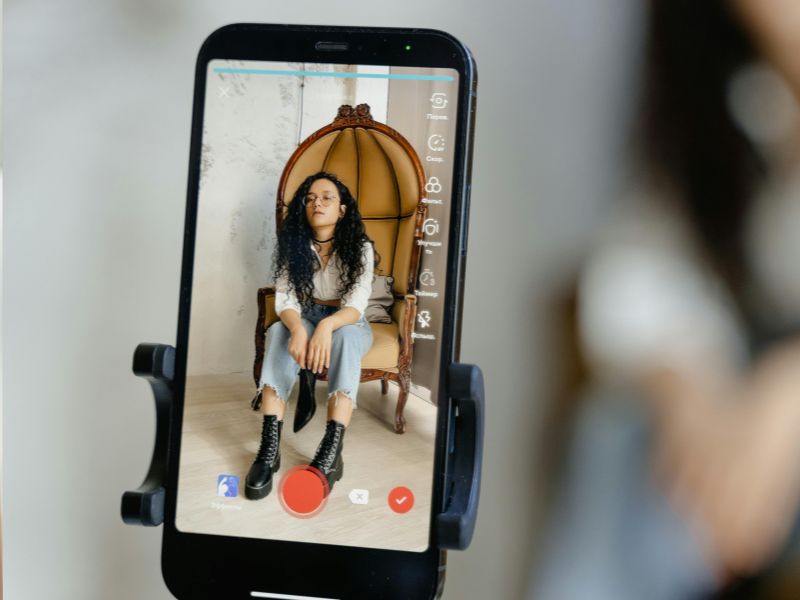
How to Optimize Your LinkedIn So People Actually Find You
This content has been archived. It may no longer be relevant
Advance tips on how you can optimize your LinkedIn so people can actually find you.
We all know by now how important it is to have a LinkedIn profile. In previous blog articles and webinars, I’ve outlined how to set up your profile, the importance of having a good profile photo, updating your experience, asking for recommendations and growing your network by adding new contacts.
Users who fully complete their profiles are 40x more likely to receive opportunities on LinkedIn. In this blog post, I’m going to go a few steps further with tips on how you can optimize your LinkedIn so people can actually find you.
Knowing Your Audience
As with any form of social media content, it’s important to know your audience and understand their pain points. Who are you trying to attract with your LinkedIn profile?
Are you looking for a job at a Fortune 500 company? Or a local startup? Do you want to be an interior designer or a graphic designer? Are you a service provider looking for freelance clients or a product developer looking for investors?
Along with knowing your audience, it’s also crucial to understand what they want. The better you understand your audience and what they’re looking for on LinkedIn, the more effective your profile will be.
Keep in mind who you’re writing for and what they want, especially as you go through the next steps.
Search Engine Optimizing Your Profile
When it comes to LinkedIn, most of us forget to spend time optimizing our profiles. But just like Google and Pinterest, LinkedIn, too, functions as a search engine.
People search by job title, skills, company, geography or directly by name. It’s important to use keywords in your headline, summary, job title and job descriptions in order to optimize your LinkedIn so people actually find you. Simply creating a headline such as “Pink Unicorn of Marketing” won’t get you found by a hiring manager looking for a marketing specialist.
Whether you’re prowling for new clients or looking for a new gig, use key terms that you want to be associated with. Most of your keywords should be industry-specific and skill-based. Add these keywords to various sections of your profile such as your summary, specialties, job title, career history and personal interests.
Finding the Right Keywords
To find keywords for your profile, do a search on LinkedIn for your profession. How are other people in your field self-identifying? Check out three or four of the top profiles that come up and make a note of any words or phrases that reappear.
Also, check out some job offers for your position. Job offers are a great place to find keywords because hiring managers load them up with the skills and experience they find the most relevant.
Finally, put yourself in the shoes of a recruiter. If you were looking for someone with a specific skill set or from a certain industry, what words would you type into the search bar to find the right person? Having a list of keywords on hand when you start to write various sections of your profile will make things much easier.
Personalizing the Headline
The headline is the first thing people see when they go to your LinkedIn profile. Unless you change it, your headline will appear as your current or last position held. Since this headline will appear in various places on LinkedIn, you want it to be more descriptive.
For service-based freelancers (like me), it’s important that you customize this highly visible real estate on your profile by talking about how you personally add value to your clients.
The LinkedIn algorithm seems to put a lot of emphasis on the words used in the headline when ranking people. It’s important that our headline includes your key attributes, benefits our company offers, or our geographic location if we serve a specific area.
An example for someone in inventory management software sales could be, “I save companies money by helping them optimize their inventory.”
You’re limited to the number of characters you can use, so keep it short but impactful.

Delivering Your Value in the Summary
Once you’ve figured out who you want to see and be convinced by your LinkedIn profile, it’s time to start crafting a story that’s going to deliver your value. A potential client, employer, or business partner isn’t interested in your skills and experience—they’re interested in what your skills and experience can do for them.
While your LinkedIn profile does serve as a sort of online résumé, it needs to be more than that if you want to appeal to valuable contacts. When doing my research for this article, I discovered three questions to ask yourself before completing your profile summary:
• What causes your potential customer or employer pain?
• How can you help ease that pain?
• What will your reader feel like once you have?
Use this formula to help optimize your LinkedIn so people actually find you. Also, keep in mind that you want your profile summary to be personable. Write as if you’re having a conversation with someone. Always write in the first person, allow your personality to come through in your writing and let people know your values and passions.
Always write as if you’re speaking directly to the type of person with whom you want to do business. Lastly, make sure to have a call to action at the end, so your prospects know what to do next and how to reach you.
Including Value-Add Content
To optimize your LinkedIn profile so that people actually find you, add at least two pieces of value-add content to your profile. They can be links to blog posts, portfolio pieces, past client work, articles you’ve written, articles you’ve been featured in, videos, or landing pages.
Think of your profile as your personal sales presentation to prospects. If it’s a new job you’re looking for, including a link to your blog or resume site, will give you a leg up on the competition. Strong visual aids are a must! You can attach multi-media content to your summary section and the experience section.
Publishing Thought Content
There are over 500 million users on LinkedIn. But just because millions of people own profiles on the network, it doesn’t mean that they’re active. To optimize your LinkedIn so people actually find you, it’s important to maintain consistent visibility.
Make a point to share useful articles related to your field and update your network on what you’re doing professionally. Look for interesting, topical stories, videos and photos that involve your profession, and make intelligent comments or share posts on your profile page.
If you haven’t already, take a stab at publishing articles on LinkedIn. Publishing on LinkedIn allows you to further establish your professional identity by expressing your opinions and sharing your experiences. Your content is displayed on the Articles section of your LinkedIn profile and becomes part of your professional profile.
If you have a blog and already do quite a bit of publishing—even better! Re-purpose your existing blog posts as LinkedIn articles.
Since LinkedIn will probably have a stronger site authority and better page ranking than your blog (no offence), re-publishing your existing blog article on your LinkedIn profile means people will be more likely to actually find you.
Getting Social Proof
Getting recommendations from customers or clients is extremely important and represents the social proof needed to build trust and credibility. This is a critical component of optimizing your LinkedIn profile.
Users who fully complete their profiles are 40x more likely to receive opportunities on LinkedIn.
LinkedIn is about making connections. Sometimes those connections lead to jobs, new business or new partnerships. The best way to connect with people is always to be helpful. Offer them your expertise or help them out with a project.
That’s what really creates bonds between people, and that’s what will significantly improve the visibility of your LinkedIn profile.
Image via Stocksy
Comments: 3
Leave a Reply
You must be logged in to post a comment.



Pingback: Business Development Ideas to Grow Your Sales | See Girl Work